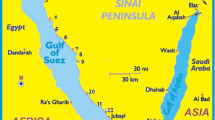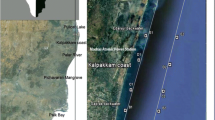Abstract
To understand the responses of a freshwater ecosystem to the impoundment of the Three Gorges Reservoir (TGR), phytoplankton was monitored in the tributaries of the TGR area. From August 2010 to July 2011, algal species composition, abundance, chlorophyll a and other environmental parameters were investigated in the Gaolan River, which is a tributary of Xiangxi River. Thirty-one algal genera from seven phyla were identified. Results show that the lowest concentrations of total phosphorus (TP) and total nitrogen (TN) were 0.06 mg/L and 1.08 mg/L, respectively. The values of TP and TN exceeded the threshold concentration of the eutrophic state suggested for freshwater bodies. In the Gaolan River, the succession of phytoplankton showed clear seasonal characteristics. Different dominant species were observed among seasons under the control of environment factors. In spring and summer, the dominant species were Nitzschia sp. and Aphanizomenon flos-aquae (L.) Ralfs, the limiting nutrient was NO −3 -N, and the key environmental factor for phytoplankton population succession was water temperature (WT). In autumn and winter, the dominant species were A. flos-aquae and Chlorella sp., the limiting nutrient was PO 3−4 -P, and the key environmental factors were transparency and WT. This study illustrates the influence of physical and chemical factors on phytoplankton seasonal succession in a tributary of TGR since the downstream regions of Xiangxi River and Gaolan River became reservoirs after impoundment of the Three Gorges Dam. We suggest that this activity has significantly affected water quality in the dam area.
Similar content being viewed by others
References
Arora J, Mehra N K. 2009. Seasonal dynamics of zooplankton in a shallow eutrophic, man-made hyposaline lake in Delhi (India): role of environmental factors. Hydrobiologia, 626: 27–40.
Bi Y H, Zhu K X, Hu Z Y, Zhang L, Yu B S, Zhang Q. 2010. The effects of the Three Gorges Dam’s (TGD’s) experimental impoundment on the phytoplankton community in the Xiangxi River, China. Int. J. Environ. Stud., 67: 207–221.
Bianchi F, Acri F, Aubry F B, Berton A, Boldrin A, Camatti E, Cassin D, Comaschi A. 2003. Can plankton communities be considered as bio-indicators of water quality in the Lagoon of Venice? Mar. Pollut. Bull., 46: 964–971.
Burke M, Jorde K, Buffington J. 2009. Application of a hierarchical framework for assessing environmental impacts of dam operation: changes in streamflow, bed mobility and recruitment of riparian trees in a western North American river. J. Environ. Manage., 90: S224–S236.
Cai Q, Liu J, King L. 2002. A comprehensive model for assessing lake eutrophication. Chin. J. Appl. Ecol., 13(12): 1 674–1 678.
Dai Q, Shan H X, Cui W L, Jia Y G. 2011. A laboratory study on the relationships between suspended sediment content and the conductivity and their influencing factors. Acta Oceano. Sin., 33: 88–94. (in Chinese with English abstract)
Ding X L, Fu J, Zhang Q H. 2004. Stability analysis of landslide in the south end of FengJie highway bridge with fluctuation of water level of Three Gorges Reservoir. Chin. J. Rock Mech. Eng., 23(17): 2 913–2 919. (in Chinese with English abstract)
Dokulil M T, Teubner K. 2000. Cyanobacterial dominance in lakes. Hydrobiologia, 438: 1–12.
Eker E, Georgieva L, Senichkina L, Kideys A E. 1999. Phytoplankton distribution in the western and eastern Black Sea in spring and autumn 1995. J. Mar. Sci. (Suppl.), 56: 15–22.
Eynard F, Mez K, Walther J L. 2000. Risk of cyanobacterial toxins in Riga waters. Water Res., 34: 2 979–2 988.
Ferreira F M B, Soler J M F, Fidalgo M L, Fernandez-Vila P. 2001. PSP toxins from Aphanizomenon flos-aquae (cyanobacteria) collected in the Crestuma-Lever reservoir (Douro River, northern Portugal). Toxicon., 39: 757–761.
Gikas G D, Tsihrintzis V A, Akratos C S et al. 2009. Water quality trends in Polyphytos reservoir, Aliakmon River, Greece. Environ. Monit. Assess., 149: 163–181.
Ha K, Jang M H, Joo G J. 2003. Winter Stephanodiscus bloom development in the Nakdong River regulated by an estuary dam and tributaries. Hydrobiologia, 506–509: 221–227.
Hecky R E, Kilham P. 1988. Nutrient limitation of phytoplankton in freshwater and marine environments: a review of recent evidence on the effects of enrichment. Limnol. Oceanogr, 33: 796–822.
Huang X F, Chen W M, Cai Q M. 1999. Survey, Observation and Analysis of Lake Ecology. Chinese Standardization Press. (in Chinese)
INDITE. 1994. Impacts of nitrogen deposition on terrestrial ecosystems. Report of the UK Review Group on Impacts of Atmospheric Nitrogen. Department of the Environment, London, UK.
Jeong K S, Kim D K, Joo G J. 2007. Delayed influence of dam storage and discharge on the determination of seasonal proliferations of Microcystis aeruginosa and Stephanodiscus hantzschii in a regulated river system of the lower Nakdong River (South Korea). Water Res., 41: 1 269–1 279.
Ke Z X, Xie P, Guo L G. 2008. Controlling factors of springsummer phytoplankton succession in Lake Taihu (Meiliang Bay, China). Hydrobiologia, 607: 41–49.
Kearns K D, Hunter M D. 2001. Toxin-producing Anabaena flos-aquae induces settling of Chlamydomonas reinhardtii, a competing motile alga. Microb. Ecol., 42: 80–86.
Lancelot C, Staneva J, Van Eeckhout D, Beckers J M, Stanev E. 2002. Modeling the Danube-influenced North-western Continental Shelf of the Black Sea: II. Ecosystem response to changes in nutrient delivery by the Danube River after its damming in 1972. Estuar. Coas. Shelf Sci., 54: 473–99.
Little L S, Edwards D, Porterc D E. 1997. Kriging in estuaries: as the crow flies, or as the fish swims? J. Exp. Mar. Biol. Ecol., 213: 1–11.
Mischke U. 2003. Cyanobacteria associations in shallow polytrophic lakes: influence of environmental factors. Acta Oecol., 24: S11–S23.
Nilsson C, Reidy C A, Dynesius M, Revenga C. 2005. Fragmentation and flow regulation of the world’s large river systems. Science, 308(5720): 405–408.
Ricart M, Guasch H, Barceló D, Brix R, Conceição M H, Geiszinger A et al. 2010. Primary and complex stressors in polluted Mediterranean rivers: pesticide effects on biological communities. J. Hydrol., 383: 52–61.
Singh D P, Tyagi M B, Kumar A, Thakur J K, Kumar A. 2001. Antialgal activity of a hepatotoxin-producing cyanobacterium, Microcystis aeruginosa. World J. Micro. Biot., 17: 15–22.
Skulberg O M. 1995. Use of algae for testing water quality. In: Wiessner W, Schnepf E, Starr R C eds. Algae, Environment and Human Affairs. Biopress Limited, Bristol, p.181–199.
State Environmental Protection Bureau (SEPB). 2002. Methods of Monitoring and Analysis for Water and Wastewater (4th Edn.). China Environmental Science Press. (in Chinese)
Suikkanen S, Fistarol G O, Graneli E. 2004. Allelopathic effects of the Baltic cyanobacteria Nodularia spumigena, Aphanizomenon flos-aquae and Anabaena lemmermannii on algal monocultures. J. Exp. Ma. Bio. Ecol., 308: 85–101.
Syvitski J P M, Vorosmarty C J, Kettner A J, Green P. 2005. Impact of humans on the flux of terrestrial sediment to the global coastal ocean. Science, 308(5720): 376–380.
Terbraak C J F, Verdonschot P F M. 1995. Canonical correspondence analysis and related multivariate methods in aquatic ecology. Aquat. Sci., 57(3): 255–289
Thornton I W B, New T R, Zann R A, Rawlinson P A. 1990. Colonization of the Krakatau Islands by animals: a perspective from the 1980s. Phil. Trans. R. Soc. Lond. B., 328: 131–165.
United States Environmental Protection Agency (USEPA). 1998. National Strategy for the Development of Regional Nutrient Criteria. USEPA-822-R-98-002.
United States Environmental Protection Agency (USEPA). 2000. Nutrient Criteria, Technical Guidance Manual: Lakes and Reservoirs. USEPA-822-B00-001.
Vasconcelos V M. 1999. Cyanobacteria toxins in Portugal: effects on aquatic animals and risk for human health. Braz. J. Med. Bio. Res., 32: 249–254.
Waite S. 2000. Ordination: patterns and gradients among samples. In: Waite S ed. Statistical Ecology in Practice: A Guide to Analyzing Environmental and Ecological Hydrobiologia Field Data. Pearson Education Limited, England. p.268–302.
WCD (World Commission on Dams). 2000. Dams and development: a new framework for decision-making. Earthscan Publications, London, UK.
William L G. 2006. Downstream hydrologic and geomorphic effects of large dams on American rivers. Geomorphology, 79: 336–360.
Wu C L, Zhang P C. 2002. Primary study on soil erosion factors of the Wangjiaqiao watershed in Three Gorges Reservoir Area. Resour. Environ. Yangtze Basin, 11(2): 165–170. (in Chinese with English abstract)
Wu J G, Huang J H, Han X G, Xie Z Q, Gao X M. 2003. Three-Gorge Dam-experiment in habitat fragmentation? Science, 300: 1 239–1 240.
Zhang M, Cai Q H, Wang L, Xu Y Y, Kong L H, Tan L. 2009. Preliminary study on cyanobacterial bloom in Xiangxi Bay, Three Gorges Reservoir. Wetland Sci., 7(3): 230–236. (in Chinese with English abstract)
Zhou G J, Bi Y H, Zhao X M, Chen L, Hu Z Y. 2009. Algal growth potential and nutrient limitation in spring in Three-Gorges reservoir, China. Fres. Environ. Bull., 18: 1 642–1 647.
Zhou G J, Zhao X M, Bi Y H, Liang Y B, Hu J L, Yang M, Mei Y, Zhu K X, Zhang L, Hu Z Y. 2011. Phytoplankton variation and its relationship with the environment in Xiangxi Bay in spring after damming of the Three-Gorges, China. Environ. Monit. Assess., 176: 125–141.
Author information
Authors and Affiliations
Corresponding author
Additional information
Supported by the National Major Programs of Water Body Pollution Control and Remediation (No. 2012ZX07103003-02) and the National Basic Research Program of China (973 Program) (No. 2008CB418000)
Rights and permissions
About this article
Cite this article
Peng, C., Zhang, L., Zheng, Y. et al. Seasonal succession of phytoplankton in response to the variation of environmental factors in the Gaolan River, Three Gorges Reservoir, China. Chin. J. Ocean. Limnol. 31, 737–749 (2013). https://doi.org/10.1007/s00343-013-2165-4
Received:
Accepted:
Published:
Issue Date:
DOI: https://doi.org/10.1007/s00343-013-2165-4




